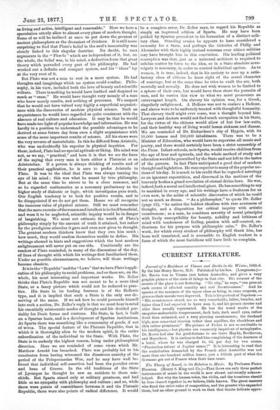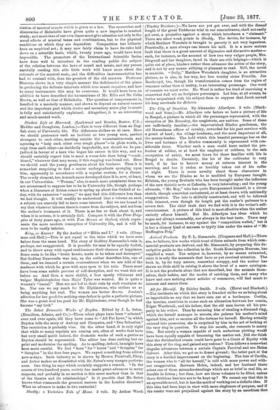The Theory of Sound, in its Relation to Music. By
Professor Pietro Blaserna. (Henry S. King and Co.)—That there are only three perfect instruments of music in the world is now ahnest universally acknow- ledged. But why the human voice, the violin, and the trombone, shenid be thus classed together is, we believe, little known. The great =eters who fixed the strict rules of composition, and the greater who:expended them, had no other ground to work on than that innate delicate appre- elation of musical sounds which is given to a few. The researches and discoveries of Helmholtz have given quite a new impulse to musical study, and musicians of our own times must give attention not only to the aural effects of musical tones and combinations, but to the physical conditions on which they are dependent. Composition has hitherto been an empirical art ; it may now fairly claim to have its rules laid down on a scientific basis, which, twenty years ago, would have been impossible. The promoters of the International Scientific Series have done well to introduce to the reading public the subject of the relation between the laws of sound and music, and any person carefully reading this able little work will know more about the rationale of the musical scale, and the difficulties instrumentation has had to contend with, than the greatest of the old masters. Professor Blasorna shows in a very simple manner the deficiencies of the piano in producing the delicate intervals which tree music roq wires, and how in many instruments this may be overcome. It would have been an addition to have described the harmoniums of Mr. Ellis and Mr. Colin Brown, as well as that of Helmholtz. The question of temperament is, handled in a masterly manner, and shown to depend on natural causes and the important part which timbre and secondary notes play in music is fully and satisfactorily explained. Altogether, it is an interesting and much-needed work.



































 Previous page
Previous page